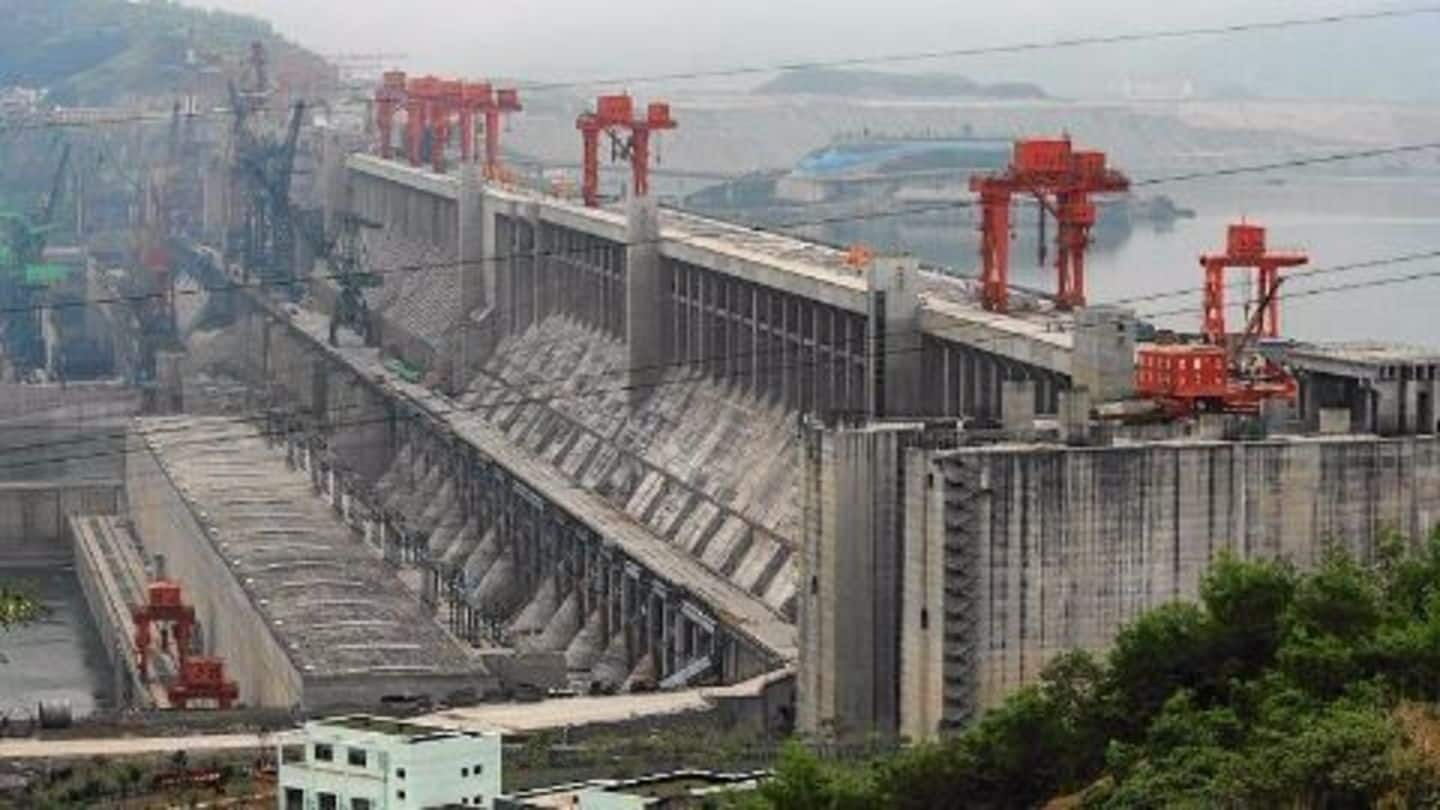
China operationalises Zangmu Hydropower Station
What's the story
China operationalised the biggest hydropower facility on the Brahmaputra in Tibet - the Zangmu Hydropower Station on 13 October 2015. The $1.5 billion project was completed by one of China's biggest state dam builders, the Gezhouba Group, while the investment was provided by China's Huaneng Power International. The project's first unit started generating power in 2011, and all its six units were connected today.
Do you know?
The reach of the Brahmaputra
The 2,906 km long Brahmaputra, flows through three countries - the first 1,625 km flows through Tibet, the next 918 km through India, and the remaining 363 km through Bangladesh before merging with the Bay of Bengal.
Design
The Zangmu Hydropower facility's design and capacity
The Zangmu Dam is a 116 m tall, 389 m long, concrete gravity-type dam. The dam sits at the head of a 157,668 sq. km catchment area, and has a storage capacity of 86,600,000 cubic metres. The power plant sits at the toe of a 80 m tall retaining section, and contains six 85 megawatt Francis-turbine generators for a total capacity of 510 megawatts.
Concerns
Indian concerns regarding damming of Brahmaputra
The Brahmaputra in Tibet was part of China's 2011-2015 energy "five-year plan", and apart from Zangmu, has three other damns planned at Jiacha, Jiexu and a massive 640 megawatt dam at Dagu. An Indian Inter-Ministerial Expert Group (IMEG) noted in 2013, that the dams were 550km from the Indian border, which raised concerns about the effects of diversion of water on people living downstream.
Data
Power generation capabilities of Zangmu
The Zangmu Hydropower Station, with its capacity of 510 megawatts, will produce 2.5 billion kilowatt-hours of electricity annually- enough for 600,000 residents as per Chinese per capita power use in 2014.
Assurances
China assuages Indian concerns
Indian concerns that Chinese dams on the Brahmaputra could disrupt downstream water supplies, and could be used to flood India during times of conflict, were repeatedly denied by China. In 2010, Chinese Vice Foreign Minister Zhang Zhijun assured Foreign Secretary Nirupama Rao regarding the purpose of the dam, saying that it was not a project designed to divert water and affect water supply downstream.
Do you know?
China's power generation capabilities
China's targets for its 2011-2015 energy generation plans, proceeded at a lightning pace with the 2015 target being reached a year earlier in 2014. As of 2014, China's hydropower generating capacity was at a mindblowing 300 gigawatts.